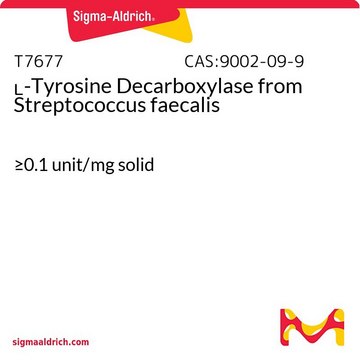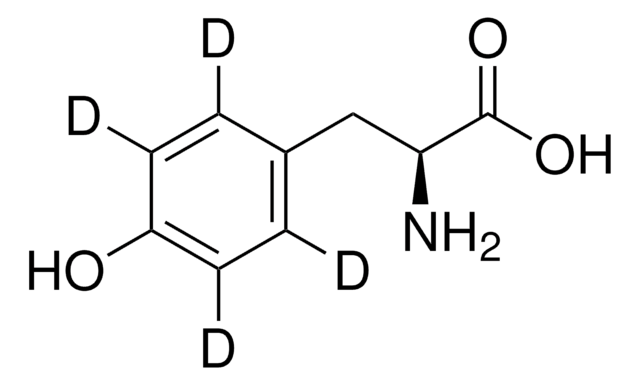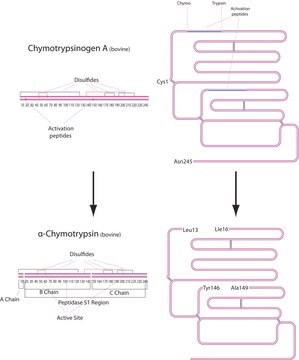T7927
L-Tyrosine Decarboxylase Apoenzyme from Streptococcus faecalis
<0.005 unit/mg solid (without pyridoxal 5-phosphate), ≥0.05 unit/mg solid (with excess pyridoxal 5-phosphate)
Synonym(s):
L-(−)-Tyrosine Apodecarboxylase, L-Tyrosine Carboxy-lase apoenzyme, TAD
About This Item
Recommended Products
biological source
Streptococcus faecalis
Quality Level
form
powder
specific activity
≥0.05 unit/mg solid (with excess pyridoxal 5-phosphate)
<0.005 unit/mg solid (without pyridoxal 5-phosphate)
storage temp.
−20°C
Looking for similar products? Visit Product Comparison Guide
Application
- in a study to purify and characterize tyrosine decarboxylase and aromatic-L-amino-acid decarboxylase
- in a study to investigate the stereospecificity of sodium borohydride reduction of tyrosine decarboxylase
- in protein synthesis studies
Biochem/physiol Actions
Other Notes
Unit Definition
Storage Class Code
11 - Combustible Solids
WGK
WGK 3
Flash Point(F)
Not applicable
Flash Point(C)
Not applicable
Personal Protective Equipment
Choose from one of the most recent versions:
Certificates of Analysis (COA)
Don't see the Right Version?
If you require a particular version, you can look up a specific certificate by the Lot or Batch number.
Already Own This Product?
Find documentation for the products that you have recently purchased in the Document Library.
Our team of scientists has experience in all areas of research including Life Science, Material Science, Chemical Synthesis, Chromatography, Analytical and many others.
Contact Technical Service








